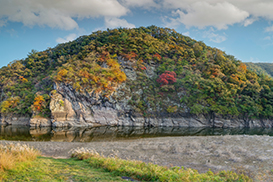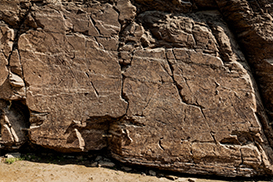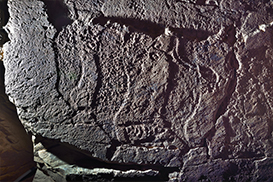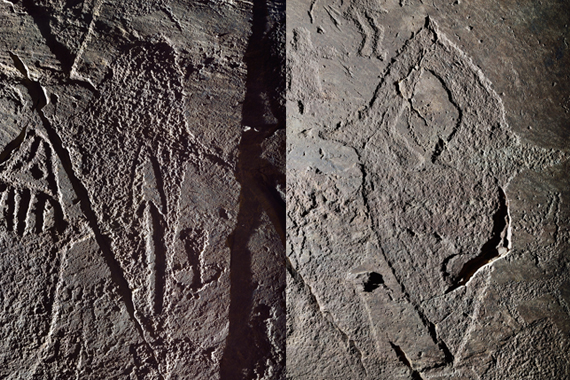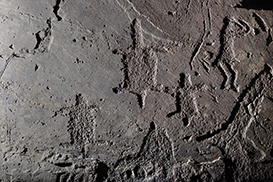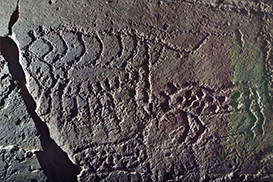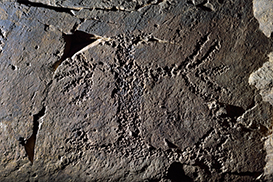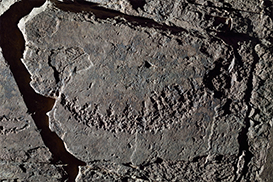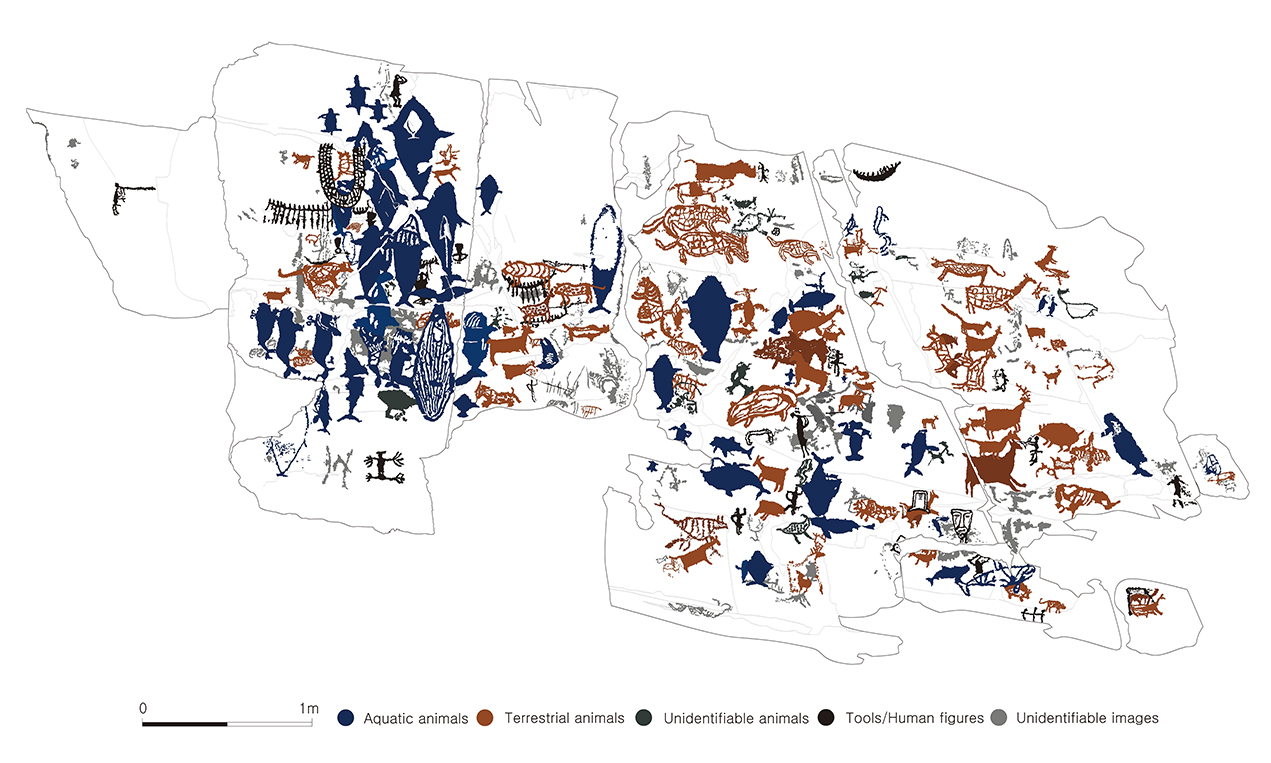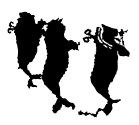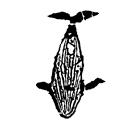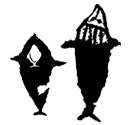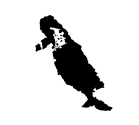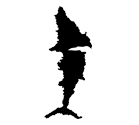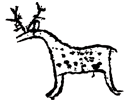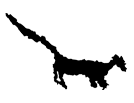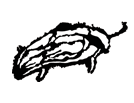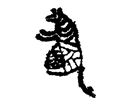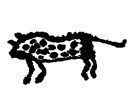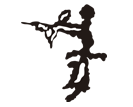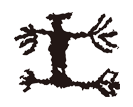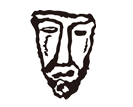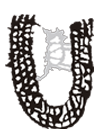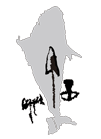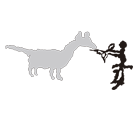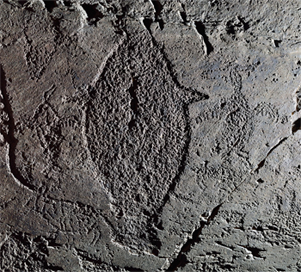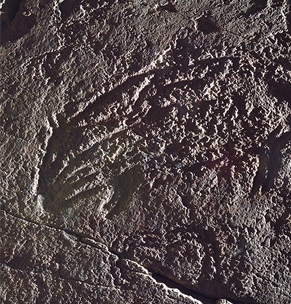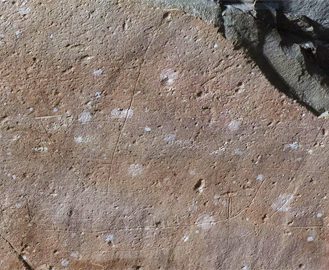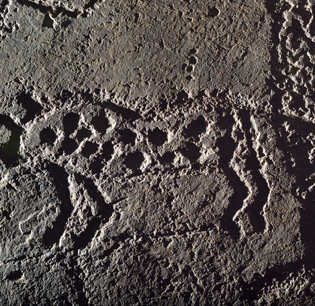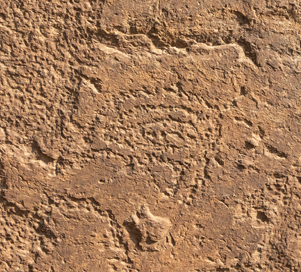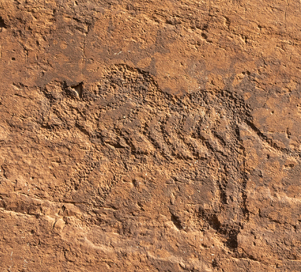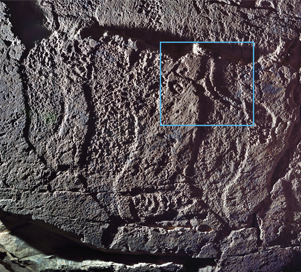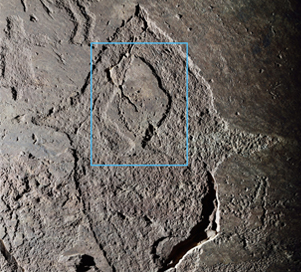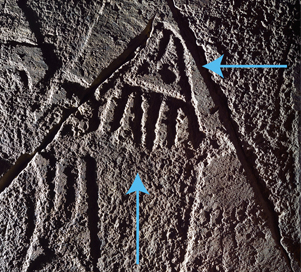Petroglyphs of Daegok-ri
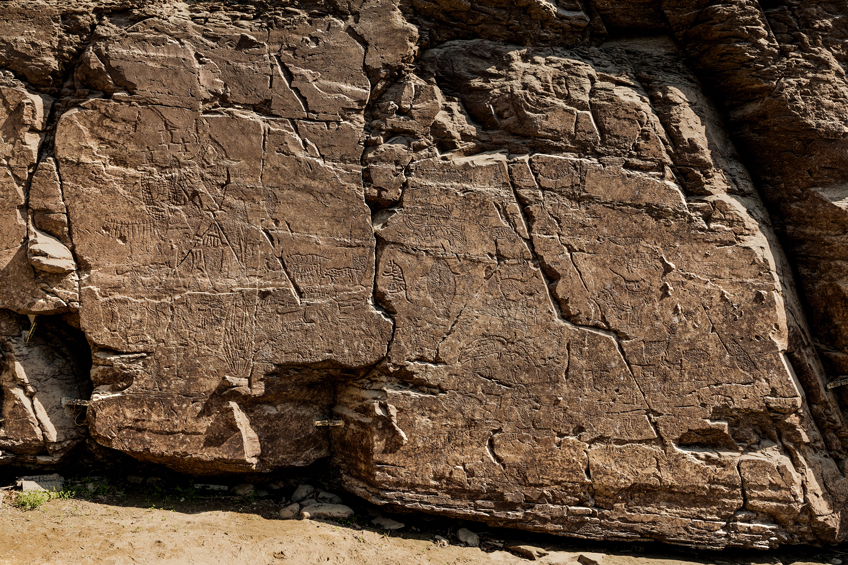
Petroglyphs of Daegok-ri
National Treasure (Designated June 23, 1995)- Name : Petroglyphs of Bangudae Terrace in Daegok-ri, Ulju
 991-3, Daegok-ri, Eonyang-eup, Ulju-gun, Ulsan
991-3, Daegok-ri, Eonyang-eup, Ulju-gun, Ulsan
Description
The Petroglyphs of Daegok-ri are found along the cliffs of Bangucheon Stream, a tributary stream in the upper part of the Taehwagang River, located approximately 0.7 kilometers downstream from Bangudae Terrace. They span about eight meters in width and 4.5 meters in height, primarily etched onto the central flat rock face, with additional images on about 10 other surrounding rock surfaces. The upper part of these rock surfaces protrudes outward, resembling a roof, serving as protection against harsh weather conditions.
This site features a total of 312 etchings, depicting at least 20 different animal species, including aquatic animals (whales, turtles, shark, etc.) and terrestrial animals (tigers, deer, wild boar, etc.). These images are realistic and three-dimensional. Furthermore, these petroglyphs offer a comprehensive portrayal of the prehistoric lifestyle, featuring scenes of people using boats to hunt whales and engaging in animal hunting with bows and arrows.
The diverse depictions of animals and tools etched onto the rocks align with animal bones and tools excavated from Neolithic sites in Ulsan and along the southeastern coast of Korea. This suggests that the Petroglyphs of Bangudae Terrace in Daegok-ri were likely created approximately 7,000 years ago, during the Neolithic period.
Along with the Petroglyphs of Daegok-ri petroglyphs, Petroglyphs of Cheonjeon-ri are registered as a UNESCO World Heritage Site Tentative Lists.
This site features a total of 312 etchings, depicting at least 20 different animal species, including aquatic animals (whales, turtles, shark, etc.) and terrestrial animals (tigers, deer, wild boar, etc.). These images are realistic and three-dimensional. Furthermore, these petroglyphs offer a comprehensive portrayal of the prehistoric lifestyle, featuring scenes of people using boats to hunt whales and engaging in animal hunting with bows and arrows.
The diverse depictions of animals and tools etched onto the rocks align with animal bones and tools excavated from Neolithic sites in Ulsan and along the southeastern coast of Korea. This suggests that the Petroglyphs of Bangudae Terrace in Daegok-ri were likely created approximately 7,000 years ago, during the Neolithic period.
Along with the Petroglyphs of Daegok-ri petroglyphs, Petroglyphs of Cheonjeon-ri are registered as a UNESCO World Heritage Site Tentative Lists.
Discovery
The Dongguk University Museum’s survey group was investigating the Ulju region for Buddhist sites on December 24, 1970, in the course of which they visited the Bangudae area to locate the site of Bangosa Temple, where the great monk Wonhyo from the Silla Dynasty is said to have stayed. A local resident directed them to a carved stone in Cheonjeon-ri, and this was the first Korean petroglyph reported to academic society.
They were surveying the caved stone at Cheonjeon-ri the following year on December 25, 1971, when a village resident directed them to the Petroglyphs of Daegok-ri. These petroglyphs lie approximately 0.7km downstream from Bangudae Terrace.
They were surveying the caved stone at Cheonjeon-ri the following year on December 25, 1971, when a village resident directed them to the Petroglyphs of Daegok-ri. These petroglyphs lie approximately 0.7km downstream from Bangudae Terrace.









